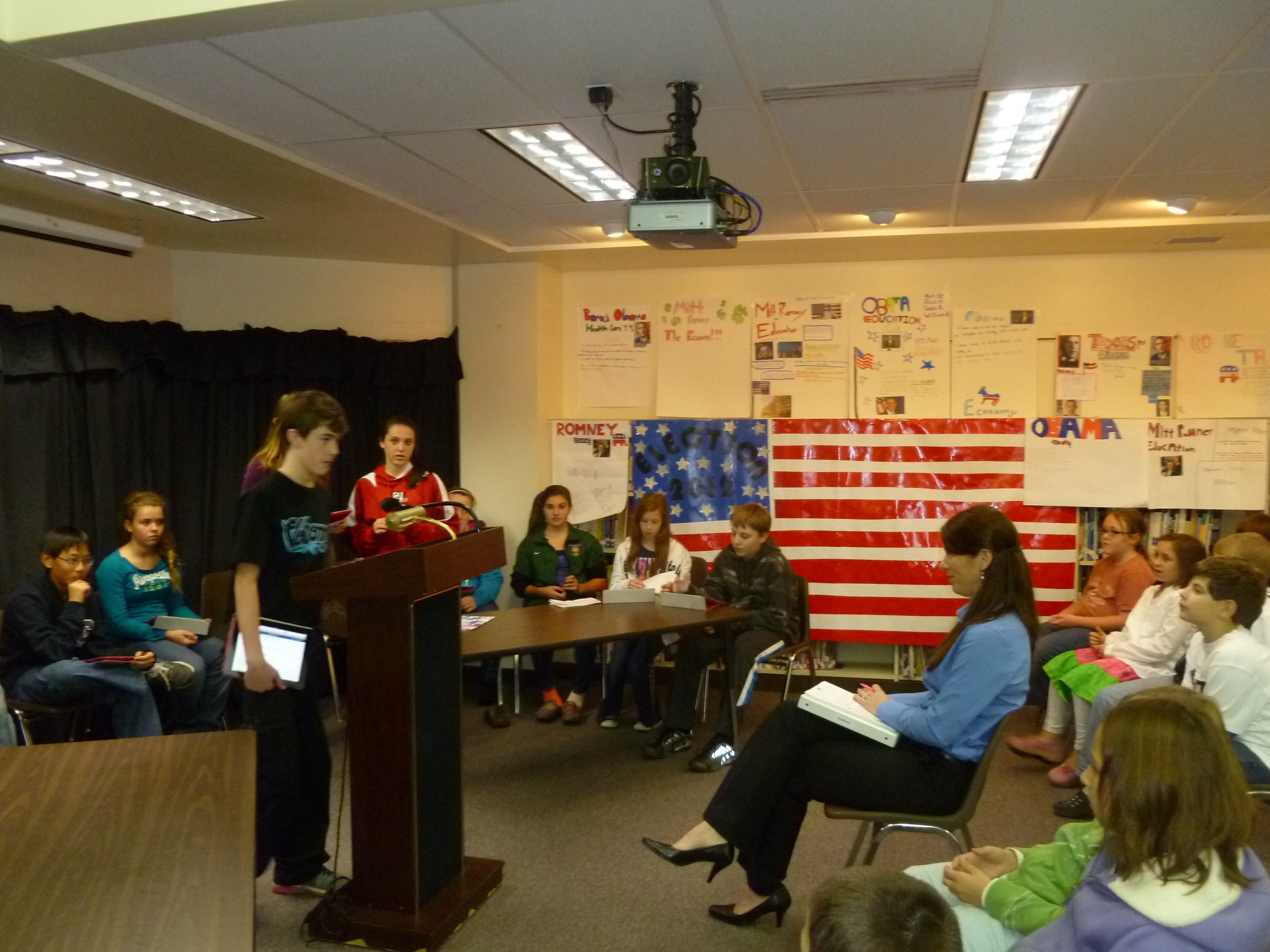Public schools have long been a backbone to our nation. As a cornerstone for local communities, public schools have helped prepare a skilled workforce essential for manufacturing; they’ve also produced doctors, lawyers, academics, and others essential to a healthy and thriving society.
The first public school of record was the Boston Latin School, established in 1635. Still in existence today, it is currently ranked the #1 high school in Massachusetts and #48 in the nation according to U.S. News & World Report.
While we have an educational system that has led the world in many arenas, our public schools often face stiff challenges: Their budgets are stretched too thin while costs continue to rise. Expectations and accountability continue to remain front and center in an ever-changing political climate. There aren’t enough highly-qualified teachers, particularly in shortage areas such as math, science, special education, and English language learning. As a result, some school districts have been forced to find ways to serve students and yet remain fiscally solvent. Enter the four-day school week.
Which Schools Use a Shortened Week the Most?
Approximately 560 school districts in 25 states have moved to a four-day school week. Most of the schools are small and are located in rural areas. Within the past few years some larger urban districts have begun experimenting with a shorter school week, but those numbers are small compared to rural counterparts. In five states (Colorado, South Dakota, Oregon, Idaho, and New Mexico) at least 20% of schools within each of those five states have adopted a shortened school week model.
However, if we look at the actual number of school districts, then the state leaders for four-day weeks are Colorado, Montana, Oklahoma and Oregon. Colorado has the largest proportion of public-school districts with one or more schools on a four-day week at 98. Missouri currently has 28 schools on a four-day schedule.
How is a Four-Day School Week Implemented?
The most common model is to adhere to a Monday through Thursday schedule. Most states require a minimum number of days and instructional contact hours in each school year; schools that have adopted a four-day week simply reconfigure their schedules to fit the required contact hours into a shorter time span. This can make for a very long school day, particularly for students who have a long bus ride to and from home. In some instances, students have a 90-minute bus ride each morning and again each evening.
How Big are the Savings to School Districts?
According to a report from the Education Commission of the States (ECS), national finance data concludes that the actual savings for districts that moved to a four-day week were between 0.4% and 2.5%. Depending on the size of the district, savings on bus transportation, building utilities, and custodial services could be significant enough for superintendents to seriously consider this model, particularly in states that have cut funding for P-12 schools. However, no savings are noted for staff salaries and benefits, given that staff must still work the same number of hours per school year.
What’s the Impact on Teacher Recruitment & Retention?
Based on a perception study conducted by Turner, Finch, & Ximena, school staff tend to like the convenience of a shortened work week despite a longer work day. This could potentially serve as a drawing card to attract applicants particularly in high-demand areas such as math, science, special education, and English Language Learners. However, very little formal research has been conducted on four-day school weeks, so the long-term impact on teacher supply and demand remains to be seen.
But What About Impact on Students?
Health & Safety
While some stay-at-home parents/guardians indicate they like having one day per week to schedule doctor appointments and run errands, those who work outside the home often feel frustrated by having to find childcare for one full day per week, plus the cost of paying for such care. In many instances when proper adult care isn’t available students are left home alone unsupervised, putting their health and safety at risk.
Nutrition
The vast majority of students in those 28 Missouri districts that have opted for the shortened week qualify for free or reduced lunches because of their family’s low income. In many cases, the only nutritious meals those students eat are eaten at school.
Juvenile Delinquency
When students are not in school and unsupervised, crime rates tend to rise, particularly vandalism. In their research, Fischer and Argyle (2018) analyzed crime reports in Colorado and found a 20% increase in juvenile crime.
Student Learning and Achievement
Very little quality research has been conducted on the long-term academic impact of a shortened school week, so the field is ripe for study. State departments of education should be very cautious when approving requests for a shortened school week and should monitor performance closely over time. A starting point is to focus in on one state at a time and track various data points longitudinally. To that end, some insights can be gleaned about the 28 Missouri school districts that have elected to adopt a four-day week schedule based on an analysis of data publicly available from the Missouri Department of Elementary and Secondary Education (DESE):
- Out of the 28 Missouri school districts on a four-day schedule, only 1 received full accreditation with no sanctions during their last Missouri School Improvement Program (MSIP) accreditation site visit.
- Five out of the 28 districts received District Improvement Level 1 sanctions, meaning officials must adopt a District Improvement Plan designed to improve key areas of concern. State education department officials will closely monitor Annual Performance Reviews (APRs).
- Three of the 28 districts received District Improvement Level 2 sanctions, citing a higher level of concern by MSIP teams. Level 2 schools are under even greater scrutiny to demonstrate growth and improvement.
- Thirteen out of 28—that’s more than 46%–of the school districts on a four-day schedule received District Improvement Level 3 sanctions – the most severe of all sanctions while still maintaining accreditation. In these cases, the last MSIP accreditation review revealed numerous serious concerns relative to program quality, student achievement, and other related indicators.
- Of those 13 districts earning Level 3 sanctions, only two exceeded the 2018 Missouri per-pupil expenditure average. The remaining 26 school districts all are currently spending less than the state average per pupil. While not conclusive, these data suggest there is a correlation between the amount of funding school districts receive and student achievement.
So, what’s the bottom line?
A well-educated society is essential to a healthy, thriving culture. Without a solid educational foundation our skilled workforce will diminish, and entrepreneurs will look elsewhere. Our pool of thought-leaders and problem solvers will decrease, and over time the strength of our nation will be challenged.
Given the important role that our public schools have played in our nation’s success, it’s imperative that we continue to recognize the need to fully fund them. School officials shouldn’t be forced into making tough choices that could jeopardize learning. Every single student in the United States deserves an educational experience that is second to none, regardless of the color of his skin, the native language spoken in her home, or the zip code in which they live. Every. Single. Student.
###
About the Author: Dr. Roberta Ross-Fisher has expertise in educator preparation, accreditation, online teaching & learning, and competency-based education. A former public school teacher and college administrator, Roberta is now an educational consultant.
Top image credit: The Joplin Globe.



